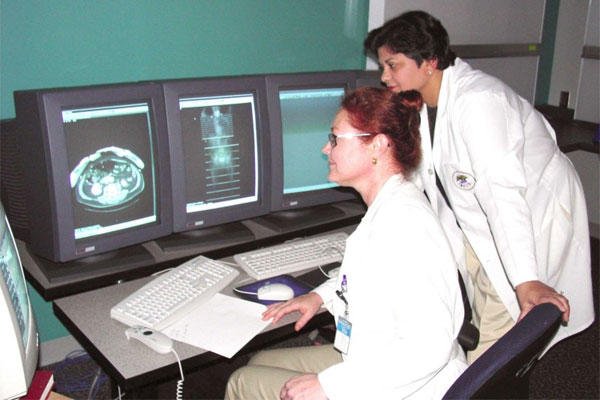The Veterans Affairs Department is field testing two new programs to give veterans using VA health care electronic access to additional records, including X-rays and MRIs.
The images would be available for download via the "Blue Button" feature on the VA's My HealtheVet website, though VA also is working on a way for veterans to personally transmit the images to another health care provider, including non-VA doctors, when necessary.
"Sometimes the challenge when you have an imaging study done is ... transferring those images to the next consult -- perhaps it's outside the VA," said Kim M. Nazi, management analyst with the Veterans Health Administration's office of Informatics and Analytics. Currently, patients have to request the images, which are copied to a CD, she told Military.com.
The VA also is field testing enabling veterans to download and securely transmit a health summary, again making it easier for a veteran to transfer his or her VA medical information to another doctor, including outside VA, she said.
The Blue Button does not provide veterans with every medical or health record the VA has on them, however. So a veteran wanting to take a deeper dive -- for example if they planned to file claim appeal or for a rating increase -- they would need to request copies of everything from their inpatient/outpatient electronic health record, according to Nazi.
"If a veteran were to go to a Release of Information Office of their local VA facility and request a copy of their records, they would get all the data that's available," she said. In September 2014, according to VA figures, approximately 123,000 veterans requested their records through these VA offices.
The records are supposed to be made available within 20 days of a request, or -- if that deadline cannot be met -- the veteran informed when they will be delivered. The VA is currently being sued by veterans who, in some cases, have waited longer than two years.
On average, about 102,000 unique visitors use the Blue Button each month.
"For the Blue Button, we see this as an opportunity to provide veterans with ... a copy of key portions of their records."
The VA is running a number of studies to evaluate and assess the impact of the Blue Button, the department said. What is known so far, officials say, is that patients value having easier access to their data, perceive that it improves their ability to participate in their own care, and makes it easier for them to share information among multiple care providers.
Making additional records, and now images, available through the Blue Button is part of the department's continued expansion of the My HealtheVet portal, itself one aspect of VA's effort to exploit information technology to provide services. In recent years its Telehealth system has enabled veterans in remote parts of the country to consult with medical specialists in facilities hundreds of miles away.
Since it was first launched in 2010, more than 1.2 million unique users have used the feature, downloading more than 10 million files, VA officials said.
The projected use and accessibility of electronic records and images was outlined in a 2008 VA report on veteran-centered services and reflected in a 2014-2020 strategic plan released by former VA Secretary Eric Shinseki last year.
The "Blue Button" is widely used across the health care and insurance industries as a way for consumers to maintain and access their personal records. The idea came out of information technology working group organized in January 2010 by the Markle Foundation, a New York-based charity devoted to improving people's lives through technology.
Only eight months later the technology was ready for prime-time, with non-profit organizations, corporations and government agencies adding Blue Buttons to their sites. Among these were the VA and the Defense Department, which added it to its Tricare portal.
At first, the Blue Button was a way for veterans to enter and store on the VA site their own medical information, among these appointment dates, medications and allergies, Nazi said.
"In January 2013, after months of planning and consulting with clinical subject matter experts, we expanded the type of information [VA would include]," she said, "adding admissions and discharges, certain types of lab results and radiology reports and clinical notes."
Nazi called the inclusion of the notes -- those taken by a doctor, nurse or social worker during any visit or consultation -- one of the most significant additions to the Blue Button feature.
-- Bryant Jordan can be reached at bryant.jordan@military.com



























